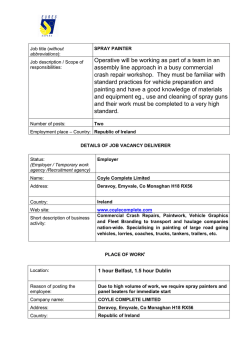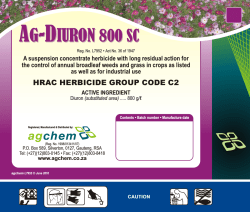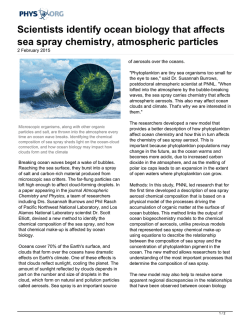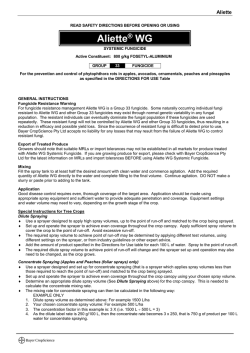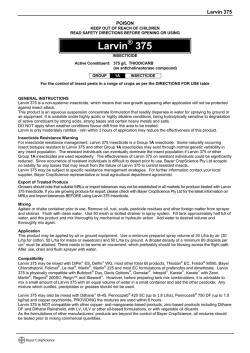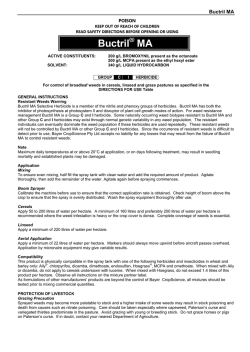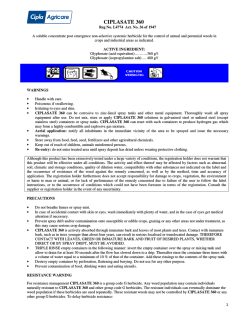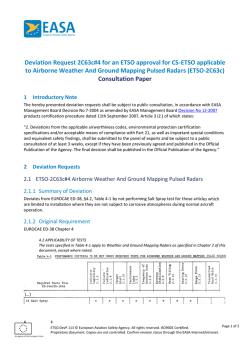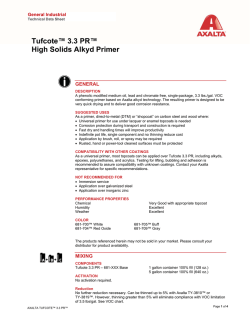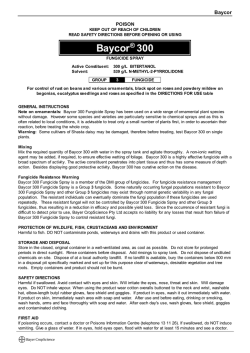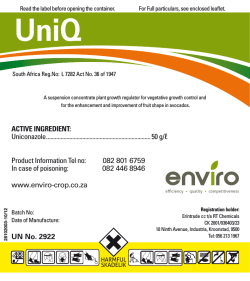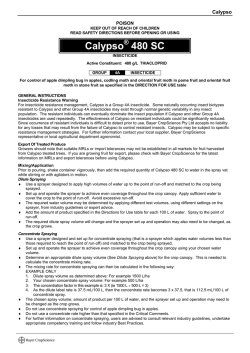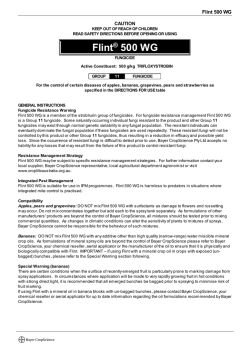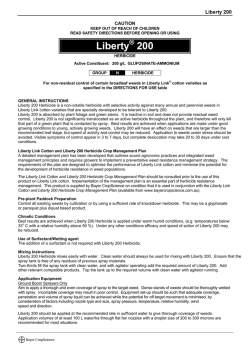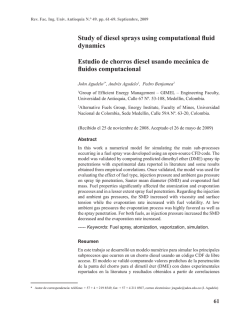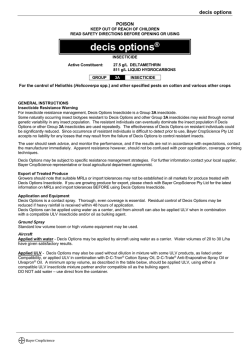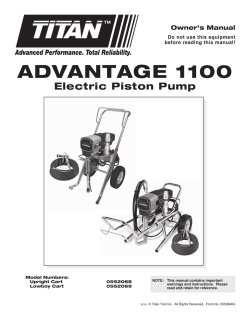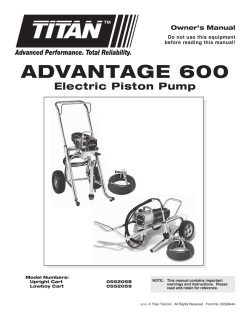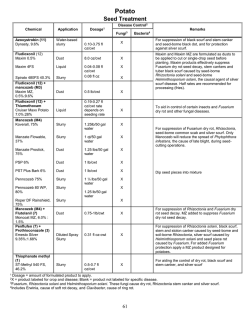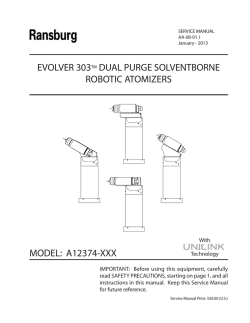
CIPLAQUAT 200 - Avocado.co.za
CIPLAQUAT 200 Reg. No. L 4167 Act No. 36 of 1947 A water soluble concentrate contact herbicide for the control of annual grasses and annual broadleaf weeds in crops and industrial areas as indicated. Inactivated on contact with soil. ACTIVE INGREDIENT: Paraquat(bipyridyl)………………………200 g/ℓ Paraquat as dichloride salt.………………276 g/ℓ UN No. 3016 WARNINGS • • • • • • • • • • • • Livestock to be kept out of treated area for 3 weeks. Handle with extreme care. IF SWALLOWED CIPLAQUAT 200 CAN BE FATAL. Do not repack in other containers. Poisonous if swallowed, inhaled or absorbed through skin. Irritating to skin and eyes and may cause skin sensitization. Toxic to fish and wildlife. Store in cool place under lock and keep away from children, feeds, food, fertilizers and other agricultural remedies. Keep out of reach of children, uninformed persons and animals. Re-entry interval: do not enter treated area within 2 days after treatment unless wearing protective clothing. In case of poisoning, call a doctor immediately and make this label available to him/her. Aerial application (sugar cane desiccation only): notify all inhabitants in the immediate vicinity of the area to be sprayed and issue necessary warnings. Do not spray directly over water or allow drift of spray to contaminate water or adjacent areas. Although this remedy has been extensively tested under a large variety of conditions, the registration holder does not warrant that it will be efficacious under all conditions because the action and effect thereof may be affected by factors such as abnormal soil, climatic and storage conditions; quality of dilution water, compatibility with other substances not indicated on the label and the occurrence of resistance of the weed against the remedy concerned as well as by the method, time and accuracy of application. The registration holder furthermore does not accept responsibility for damage to crops, vegetation, the environment or harm to man or animal or the lack of performance of the remedy concerned due to failure of the user to follow the label instructions or to the occurrence of conditions which could not have been foreseen in terms of the registration. Consult the supplier in the event of any uncertainty. PRECAUTIONS • • • • • • • • • • • • Do not inhale the spray mist. Wear full protective clothing (overall, rubber boots, gloves, face shield and a suitable respirator) during mixing and application. Do not use equipment or spray pressures which result in fine spray mist e.g. mistblowers, ULV applicators and other similar equipment. With knapsack and hand held sprayers, mix 1 part of CIPLAQUAT 200 with at least 40 parts of water. Do not use muddy water as dilution water. Wash contaminated clothing immediately. Wear clean clothes daily. Wash with soap and water immediately after the day’s work or accidental skin contact. Do not drink, eat or smoke while mixing or applying or before washing hands and face. Avoid spray drift onto adjacent areas, pastures, crops, rivers, dams and other areas not under treatment. Wash applicator after use. Dispose of wash water where it will not contaminate crops, grazing, dams or rivers. Invert the empty container over the spray or mixing tank and allow to drain for at least 30 seconds after the flow has slowed down to a drip. Thereafter rinse the container three times with a volume of water equal to a minimum of 10 % of that of the container. Add the rinsing to the contents of the spray tank before destroying the container. Never use empty container for any other purpose and destroy by perforation and flattening. Avoid contamination of food, feeds, drinking water and eating utensils. 1 SYMPTOMS OF HUMAN POISONING Vomiting, respiratory distress, tremours, general malaise, diarrhoea, cyanosis and convulsions. FIRST AID TREATMENT Skin splashes: wash off immediately. Eye splashes: flush eyes immediately with copious amounts of water for 10–15 minutes. In all cases of more than mild irritation an eye specialist should be consulted. Accidental swallowing: in the case of ingestion, induce vomiting immediately if not already occurring and take patient to hospital as soon as possible for observation. MEDICAL TREATMENT Administer immediately up to 1 litre of 15 % aqueous solution of Fullers Earth plus a suitable purgative e.g. Mannitol (20 % aqueous solution). Continue purgation until stools are seen to contain absorbent. Haemodialysis or Haemoperfuson may be necessary. See booklet “Treatment of Paraquat poisoning – A Guide to Doctors” (available from paraquat distributors). RESISTANCE WARNING For resistance management, CIPLAQUAT 200 is a group code D herbicide. Any weed population may contain individuals naturally resistant to CIPLAQUAT 200 and other group code D herbicides. The resistant individuals can eventually dominate the weed population if these herbicides are used repeatedly. These resistant weeds may not be controlled by CIPLAQUAT 200 or any other group code D herbicide. To delay weed resistance: • Avoid exclusive repeated use of herbicides from the same herbicide group code. Alternate of tank mix with products from different herbicide group codes. • Integrate the control methods (chemical, cultural, biological) into weed control programmes. For specific information on resistance management contact the registration holder of this product. DIRECTIONS FOR USE: Use only as indicated. Mix the required amount of CIPLAQUAT 200 with clean water in the spray tank. Apply by ground sprayers in 200–500 ℓ water/ha or by knapsack sprayer using 15–45 mℓ/5 ℓ water (sufficient for 100 m²). Use the high dosage rates for spraying dense weed growth. Ensure good cover. Do not spray buds or green parts of any crop. CIPLAQUAT 200 kills green tissue but does not harm mature bark. Aerial application (sugar cane desiccation only) Aerial application of CIPLAQUAT 200 may only be done by a registered aerial application operator using a correctly calibrated, registered aircraft according to the instructions of South African National Standard 10118: 2009 (Aerial Application of Pesticides). Ensure that the spray mixture is distributed evenly over the target area and that the loss of spray material during application is restricted to a minimum. It is therefore essential that the following criteria be met: • Volume: a spray mixture volume of 30–40 ℓ/ha is recommended. As this product has not been evaluated at a reduced volume rate, the registration holder cannot guarantee efficacy, or be held responsible for any adverse effects if this product is applied aerially at a lower volume rate than recommended above. • Droplet coverage: 35–45 droplets/cm² must be recovered at the target area. • Droplet size: a droplet spectrum with a VMD of 350–400 micron is recommended. Limit the production of fine droplets less than 150 micron (high drift and evaporation potential) to a minimum. • Flying height: maintain the height of the spray boom at 3–4 m above the target. Do not spray when aircraft dives, is in a climb or when banking. • Use suitable atomizing equipment that will produce the desired droplet size and coverage, but which will ensure the minimum loss of product. The spraying system must produce a droplet spectrum with the lowest possible Relative Span. • Position all the atomizers within the inner 60–75 % of the wingspan to prevent droplets from entering the wingtip vortices. • The difference in temperature between the wet and dry bulb thermometers, of a whirling hygrometer, should not exceed 8 °C. • Stop spraying if the wind speed exceeds 15 km/h. • Stop spraying under turbulent, unstable and dry conditions during the heat of the day. 2 • • • Spraying under temperature inversion conditions (spraying in or above the inversion layer) and/or high humidity conditions (relative humidity 80 % and above) may lead to the following: a) reduced efficacy due to suspension and evaporation of small droplets in the air (inadequate coverage). b) damage to other sensitive crops and/or non-target areas through drifting of the suspended spray cloud away from the target field. Ensure that the aerial spray operator knows exactly which fields to spray. Obtain an assurance from the aerial spray operator that the above requirements will be met and that relevant data will be compiled in a logbook and kept for future reference. CROP Vineyards DOSAGE/HA 1,5–5,0 ℓ REMARKS Apply in 200–750 ℓ water/ha as an overall application before bud burst. Subsequently as a directed spray. Deciduous fruit orchards 1,5–5,0 ℓ Apply in 200–750 ℓ water/ha. Spray as necessary from Spring. Mix with a suitable registered residual herbicide (in pome fruit only). Citrus, avocados, pecans and papayas 1,25–5,0 ℓ Apply in 200–750 ℓ water/ha. In citrus only it can be mixed with suitable registered residual herbicide. Add a wetting agent. Bananas, tea and coffee 1,25–2,5 ℓ Apply in 200–750 ℓ water/ha using a low-pressure floodjet nozzle. Add a wetting agent. Potatoes (haulm killing) 2,5–5,0 ℓ Apply in 500–1000 ℓ water/ha. Do not apply if haulms show signs of wilting as tuber damage may occur. Only spray if at least 5 hours of sunshine is expected. Lucerne (over 6 months old) 1,25–5,0 ℓ Apply in 200–500 ℓ water/ha. Apply before dormancy breaks or after harvesting before regrowth of lucerne occurs. Minimum cultivation Pre-planting weed control in annual crops. 1,5–4,0 ℓ Apply in 200–500 ℓ water/ha. Apply before planting. Industrial areas Young weeds 2,5–5,0 ℓ Apply in 500–1000 ℓ water/ha depending on the density of vegetation. Mature weeds Use the higher dosage rate. Sugar cane (Direct post-emergence in plant and ratoon sugar cane.) 1,5–3,0 ℓ Depending on weed size, 1200 mℓ/400 ℓ water will cover 0,5–1,0 ha. Should the spray come into contact with green cane leaves scorching will occur. Sugar cane desiccation 2–3,0 ℓ Apply in 100 ℓ water/ha. Burn cane as soon as possible after treatment. Aerial application: Apply in 30 ℓ water/ha. Vegetables grown in rows and other row crops 1,25–2,5 ℓ Apply in 200–500 ℓ water/ha. A directed inter-row spray for all row crops where weeds have already germinated but are not bigger than 10 cm or use a knapsack sprayer fitted with a shield. 3 Maize Inter-row weed control 1,0–2,0 ℓ Apply in 200–300 ℓ water/ha. Apply as a low pressure directed spray to weeds not taller than 10 cm. Maize plants must be at least 30 cm tall. Do not apply to maize under stress or maize with a low yield potential or during windy conditions or to fields with uneven surfaces. Use floodjet nozzles with drop arms. Scorch of lower leaves of the maize plant will occur. Care must be taken to avoid spray contact with more than the 2 lower leaves as more damage to the maize plant may result in yield reduction. WEEDS CONTROLLED: Most annual weeds which have already germinated. 4
© Copyright 2024
